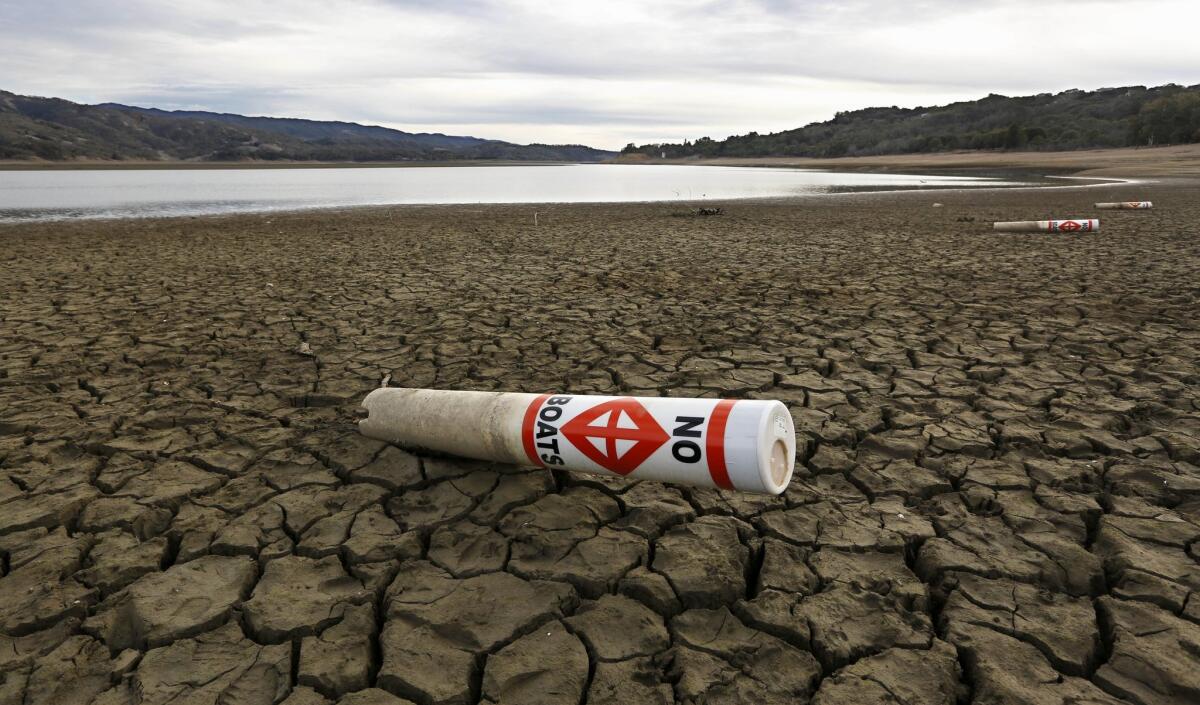Southwest and Great Plains at risk of 21st century ‘mega-drought’

- Share via
Global warming will bring the “unprecedented” risk of a decades-long mega-drought in the American Southwest and Great Plains during the second half of the century, researchers claim.
The forecast, which was published online Thursday in the new journal Science Advances, contrasts sharply with other recent assessments that report greater uncertainty about future droughts, according to study authors.
The researchers used historic tree ring data and three drought measures to conclude that there was at least an 80% chance of a 35-year-long drought occurring by the end of this century.
“Imagine a naturally occurring drought, such as the one occurring in California ... imagine that going on for decades ... that’s kind of a mega-drought,” said lead study author Benjamin Cook, a climatologist at NASA Goddard Institute for Space Studies.
Cook and his coauthors -- Toby Ault, a geoscientist at Cornell University, and Jason Smerdon, a climate scientist at Lamont-Doherty Earth Observatory of Columbia University -- discussed their research at a San Jose teleconference Thursday.
Although many scientists agree that California’s current drought is the result of natural climate variability, and not the result of global warming, Cook and his colleagues said human-produced greenhouse gasses were increasing the likelihood of future droughts.
Higher temperatures, low precipitation and increased rates of evaporation would result in drier soils, they said.
The researchers said their model was based on predicted emissions, and that reductions in those emissions could mitigate future drying.
“We’re not necessarily locked into these levels of mega-drought risk if we slow the effects of rising greenhouse gas on global temperatures,” Ault said.
Very lengthy and extreme periods of drought have affected Southern California and much of the Western United States in the past, although long before the founding of the nation.
According to scientists, paleoclimatic evidence suggests that intense periods of dryness occurred in this region from the 9th to the 14th centuries, a period now called the Medieval Climate Anomaly.
Cook and his colleagues said future drought risk probably will exceed that of the Medieval Anomaly.
“Our results point to a remarkably drier future that falls far outside the contemporary experience of natural and human systems in Western North America, conditions that may present a substantial challenge to adaptation,” the authors wrote.
“Human populations in this region, and their associated water resource demands, have been increasing rapidly in recent decades, and these trends are expected to continue for years to come.”
Follow @montemorin for science news







